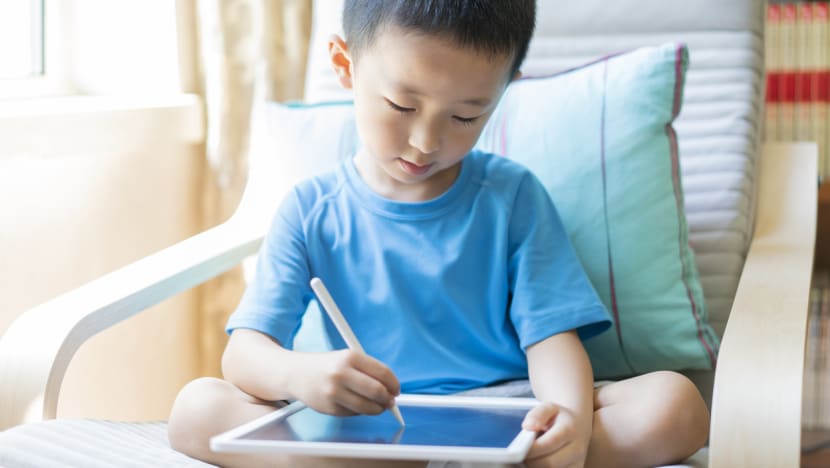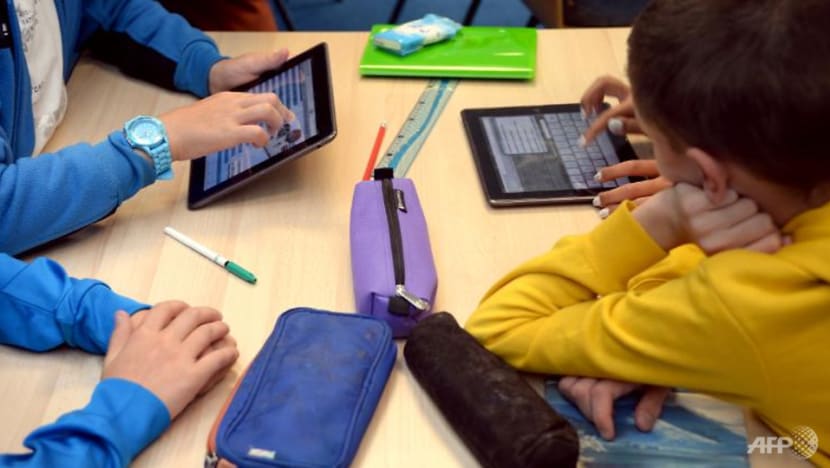Commentary: Encourage your kids to play with drawing apps during screen time
While children today are ditching drawing paper for the iPad, they’re equipping themselves for a digital world, says PixCap’s CJ Looi.

A child doodles on an iPad with a stylus. (Photo: iStock/Jasonfang)
SINGAPORE: Drawing comes as naturally to young children as the instinct of fish is to swim. Along with other forms of expression like dance and storytelling, drawing has numerous developmental benefits for children.
It can help young children pick up fine motor skills from a young age, which as adults, we rely on for texting and driving. And it helps older children with cognitive, memory and social-emotional development.
But whether children will take to drawing on paper or toys like Etch-A-Sketch is uncertain. Nearly all (97 per cent) of Singapore’s households with school-going children have access to a desktop computer, laptop or tablet.
That number is set to reach universal access. The national digital literacy programme, launched by the Ministry of Education, will ensure that 100 per cent of all secondary school students will have their own digital device by 2028. Then Education Minister Ong Ye Kung said such devices were "as essential for e-learning as paper and pen are for a traditional lesson".

It is only a matter of time before kids abandon pencils for more virtual forms of expression. Indeed, letting your kids doodle on a screen is a great way to encourage creativity while accustoming them to digital technology.
Drawing apps open more possibilities given their variety of tools, features and filters. On top of that, devices mean less mess around the house for parents to clean up and fewer opportunities for children to scrawl on the walls.
But this raises the inevitable question: What do kids lose as art-making becomes more digital?
THE CAPABILITIES OF ART SOFTWARE
It’s true that drawing by hand seems more natural than setting up a tablet with software and charging a stylus. We all have childhood memories of the smell and feel of paraffin wax from crayons dragging on a piece of school-commissioned drawing block.
But art software offer plenty of advantages such as storing content and useful options for undoing and redoing, as well as copying and pasting. Certain apps can also recreate the same feel and sound as doodling with a crayon.
Kids can enjoy a good challenge on more advanced apps for professionals. My 10-year-old niece has been using Procreate on the iPad to create paintings for art class. I was amazed at how quickly she learned to use the app, which is not marketed for beginners.
Meanwhile, a friend’s 14-year-old son has picked up Blender, a graphics software, to create 3D models and renders.
AS COMMON AS CODING
Even as kids ditch crayons for the iPad, art will not fall by the wayside in the digital world, especially as the technology to make it evolves.
Creating digital art can be as sought-after a skill as coding. 3D animation is estimated to grow at an annual rate of 12.5 per cent and become a nearly US$50 million (S$65.7 million) market by 2030, according to Acumen Research and Consulting.
Introducing children to drawing apps from an early age is crucial in developing their digital and artistic capabilities. Besides imitating traditional media like ink, watercolour and acrylic paint, more sophisticated programmes can teach children about layering and editing, which are necessary skills for many artistic careers.
Whether your child wants to be an architect, video game designer or graphic designer, classes in digital art for kids is the place to start. But parents can encourage kids to play around with all kinds of art, whether analogue or digital, to expose them to different experiences and means of expression.
CJ Looi is the CEO and co-founder of PixCap, a web-based 3D design platform.



















